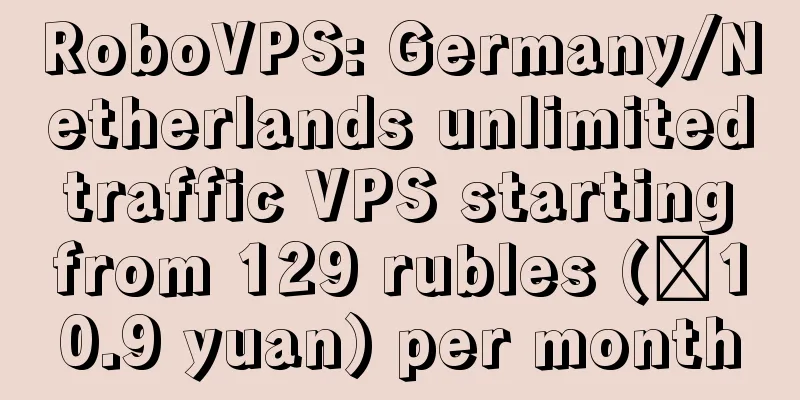IPv4 history ends, IPv6 era officially arrives

|
1. What’s coming has finally come—IPv4 address exhaustion The long-standing prediction that the world will soon run out of IPv4 addresses has finally arrived - all 4.3 billion IPv4 addresses have been allocated, which means there are no more IPv4 addresses to be allocated to ISPs and other large network infrastructure providers. IPv4 was introduced in the early 1980s. IPv4 addresses are 32-bit numbers used to identify devices on the Internet, so only a limited number of Internet addresses are provided (2^32 is about 4.3 billion). With the rapid development of the Internet, the surge in the number of connected devices, from PCs to smartphones and IoT sensors, has led to the rapid consumption of IPv4 reserves. In fact, researchers had foreseen such a future as early as the 1980s. The global management body of IP addresses is the Internet Assigned Numbers Authority (IANA), which assigns IP addresses to five regional Internet registries (RIRs) around the world. As of February 3, 2011, IANA has allocated all IPv4 addresses to five regional Internet registries:
2. The demise of IPv4 The continuous Internet registration has caused IPv4 to be consumed at a rate visible to the naked eye:
To be continued… Editor's note: Many media outlets used the headline "Global IPv4 Address Exhaustion" to report this news. According to multiple investigations by Ansu Networks, in fact, the five regions all have their own IPv4 address allocation processes, including phased consumption, reservation strategy and limited strategy, in order to delay the decay time and smoothly migrate to IPv6. Strictly speaking, the only regions that have officially announced that all IPv4 addresses have been exhausted are ARIN in North America and RIPE NCC in Europe. The news of the exhaustion of European RIPE NCC IPv4 addresses was announced by Nikolas Pediaditis in an email that reads as follows: (Translation):
In theory, the exhaustion of IPv4 addresses means that no new IPv4 devices can be added to the Internet. But in practice, we have some ways to buffer the impact of IPv4 address exhaustion. First, the ISP can reuse or recycle unused IPv4 addresses. Second, we can use the same IP address privately behind the ISP router through Network Address Translation (NAT) technology. Of course, the final step is the transition to IPv6. In order to ensure a smooth transition, the entire industry has already prepared for the rainy day and formulated a response strategy to achieve direct point-to-point connections across the entire Internet with 3.4×10^38 address space. According to the 44th "Statistical Report on Internet Development in China", as of June 2019, the number of IPv6 addresses in China was 50,286 blocks/32, ranking first in the world. 3. What are the advantages of IPv6 over IPv4? IPv4 address exhaustion is one of the driving forces behind the emergence of IPv6. IPv6 is a network layer protocol similar to IPv4. IPv4 uses 32-bit addresses and can only provide 2^32 IPv4 addresses, while IPv6 uses 128-bit addresses and can provide 2^128 unique IPv6 addresses. One of the original purposes of developing IPv6 was to solve the problem of shortage of IPv4 addresses. However, after considering the various problems encountered in the development, deployment and operation of IPv4, the designers of IPv6 have added a number of new functions to IPv6, giving it more technical advantages over IPv4.
Currently, the large-scale deployment of IPv6 still faces a series of problems. For example, the network quality and service performance need to be improved, the proportion of IPv6 traffic is still relatively low, the breadth and depth of IPv6 transformation of Internet applications are insufficient, the stock of household fixed broadband gateways needs to be transformed, and the IPv6 network security defense protection capabilities need to be improved. It is expected that IPv4 and IPv6 will coexist on the Internet for a long time, and it is difficult to predict when IPv6 will completely replace IPv4. However, transitioning to IPv6 is the only long-term solution to the exhaustion of IPv4 addresses. The Action Plan for Promoting Large-Scale Deployment of Internet Protocol Version 6 (IPv6) issued by the General Office of the CPC Central Committee and the General Office of the State Council clearly puts forward the overall goals, roadmap, timetable and key tasks for the development of my country's next generation Internet based on IPv6 in the next five to ten years. According to the plan, the following goals for large-scale deployment of IPv6 in my country are as follows:
|
>>: IPv4 addresses are exhausted. Let’s discuss IPv6 penetration and IP migration complexity.
Recommend
ITLDC: Unlimited traffic VPS limited time annual payment 40% off €22.98/year, 15 data centers in the United States/Singapore/Netherlands/Ukraine, etc.
ITLDC is currently offering an automatic 40% disc...
Five communication methods between processes required for interviews
Inter-Process Communication (IPC) refers to the t...
Summary information: HostMem/51Cloud/Qingyun Internet/TTcloud/Asia Cloud/Qimi Cloud
July is already halfway through, and the hot summ...
The United States has approved 6G trials. Is this a far-sighted move or a desperate attempt?
Recently, US President Trump announced the approv...
A Complete Guide to Data Center Site Selection
Project site selection is the starting point for ...
ZJI: 600 yuan/month-E5-2637v2/16GB/1TB SSD/20M CN2/Hong Kong Kwai Wan Data Center
Last month, ZJI offered a monthly discount for Ho...
RackNerd: San Jose AMD Ryzen+DDR4+NVMe series KVM starts at $14.18 per year
Previously, we have shared information about the ...
Four SD-WAN misconceptions
When any technology or service is sold in large q...
Simple analysis of the three important requirements for remote network connections
The continuous emergence and upgrading of online ...
DogYun's fourth anniversary: 30% off on Elastic Cloud/20% off on Classic Cloud, 40% off on new Chongqing Cloud, 10 yuan free for every 100 yuan deposit, 100 yuan off for dedicated servers
Yesterday morning we shared information about Dog...
New Development Trends of Cultural Industry in the 5G Era
5G technology has the characteristics and advanta...
Why do you need to ask someone to deploy WiFi at home? You can do it yourself
WiFi has become a necessity in life, and I believ...
Sharktech: $99/month-2*E5-2670V2/32G memory/500G SSD disk/1Gbps unlimited traffic/Los Angeles data center
Sharktech is a long-established DC merchant in th...









